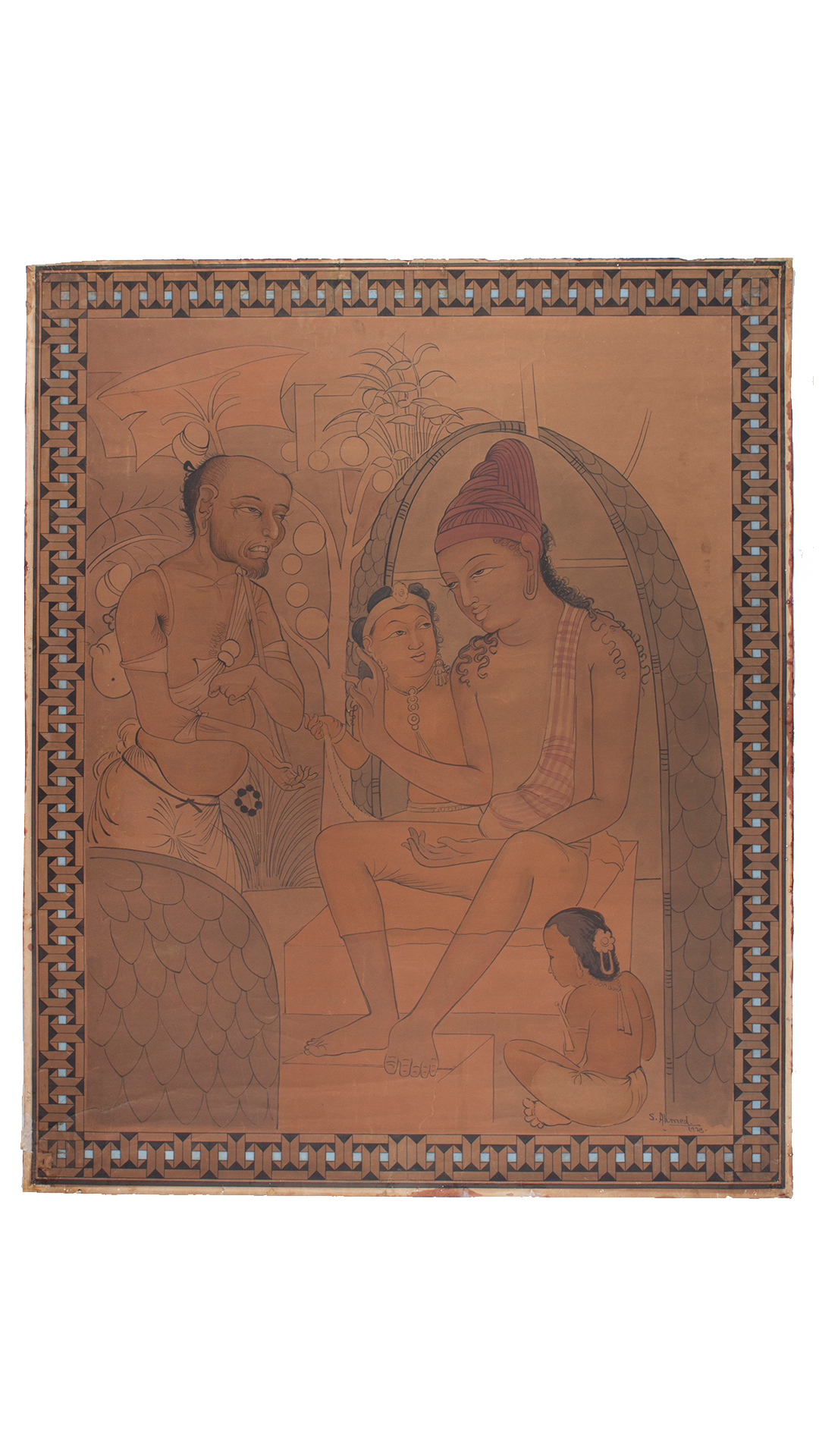Vessantara Jataka
Description
Copy of Ajanta fresco from Cave No. XVII
Brahmin Jujaka asking Vessantara, the prince of the Sibi royal house for the gift of his children as slaves.
ब्राह्मण जूजक सिबी राजवंश के युवराज वेसांतर से सेवक के रूप में उनके बच्चों की माँग करते हुए
The painting displayed here shows a detail of an episode described in the Vishvantara or Vesantara Jataka represented in the cave XVII of Ajanta. The Jataka narrating the story of king Vesantara who was known for his philanthropy is very popularly depicted in the art of the Indian subcontinent as well as South East Asia. According to the story the Buddha was born as king Vesantara in his previous life. Due to circumstances, he has to leave his palace along with his wife and two children and live a very modest life in the jungle where he continued his act of philanthropy. Once Jujaka, a cruel old Brahmin hearing about king Vesantara’s reputation goes to him to ask for his two sons as slaves so that his young wife can have some rest. Vesantara agreed to give away his children to the Brahmin.
The painting shows the Brahmin Jujaka and the king Vesantara along with his two young children. The appearance of Jujaka is authentically captured by Sayed Ahmad showing Jujaka’s entire ugly feature delineated by the Ajanta artist: the broken front teeth, goatee beard, the bald forehead and spiky hair at the back of his skull, the parrot-like nose and small, uncanny eyes.
A gift from Sir Akbar Hydari.
The Ajanta World heritage site is comprised of numerous Buddhist rock-cut caves, embellished with thousands of square feet of mural paintings and sculptures created between the 2nd century BCE and 650 CE. The present painting is a copy of one of the mural paintings at Ajanta. It was made in the early 1920s by Sayed Ahmed. These copies were commissioned by the department of archaeology of the Hyderabad state and are considered to be the most faithful copies of the original paintings. Since most of the original paintings at Ajanta have decayed due to weather and other elements these copies became more important from the point of view of research.
The copies were made under the supervision of Ghulam Yazdani, an Indian archaeologist. He persuaded Nizam – the ruler of the erstwhile Hyderabad State – to allow him to document the cave paintings of Ajanta. Accordingly, the Department of Archaeology of the Hyderabad State was founded in 1915. Ghulam Yazdani became its first director. Shortly after that Yazdani gave the task of copying of murals to the artist Syed Ahmad. He was trained by a British artists Christiana Herringham and Lady Herringham to copy the frescoes with greater fidelity to the originals. Syed Ahmad achieved a high degree of success in this task of making copies as regards tone is distinctly superior to those made by previous artists like Major R. Gill (1844 – 1866), John Griffiths, and Lady Herringham. During his tenure as a curator of Ajanta caves, some 3,000 paintings were created.
Collection
Indian Paintings
Artist
Sayed Ahmed
Object Type
Painting
Material
Water based pigments on paper
Schools/Culture/Period
--
Technique
--
Date
--
Location
Ajanta Caves, Chhatrapati Sambhaji Nagar, Maharashtra
